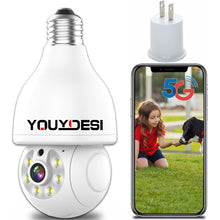1. Environmentally Friendly and Energy-Efficient: Solar-powered surveillance cameras use solar energy as their primary power source, eliminating the need for traditional grid electricity. This not only reduces environmental impact but also saves energy.
2. Suitable for Remote Areas: Solar-powered surveillance cameras are well-suited for remote areas without access to the electrical grid, avoiding the hassle and cost of wiring.
3. Flexible Placement: Due to their independence from power lines, solar cameras can be flexibly positioned wherever monitoring is needed.
4. Independent Operation: Solar-powered surveillance cameras come with independent power systems, ensuring continued operation even during power outages.
5. Low Maintenance Costs: As they are solar-powered, these cameras require less frequent battery replacement, resulting in relatively lower maintenance costs.
Disadvantages:
1. Weather-Dependent: The performance of solar-powered surveillance cameras is influenced by weather conditions, especially on cloudy days or during nighttime when energy collection may be insufficient, affecting device stability.
2. Higher Initial Costs: The initial investment cost for solar-powered surveillance cameras is relatively high, primarily due to the price of solar panels and batteries.
3. Storage and Usage Limitations: Solar-powered cameras have limitations on storage capacity and usage time, which are dependent on battery capacity. This may restrict continuous long-term monitoring.
4. Installation Location Limitations: Solar cameras require ample sunlight to operate effectively, and installation locations are influenced by the amount of daylight, necessitating careful placement.
5. Higher Technical Requirements: The installation and maintenance of solar-powered surveillance cameras require a certain level of technical expertise to ensure proper operation and upkeep.
In conclusion, solar-powered surveillance cameras offer distinct advantages, particularly in specific scenarios like remote areas or locations without grid power. However, when choosing to use them, factors such as weather conditions and equipment investment should be considered to ensure they meet monitoring requirements.










